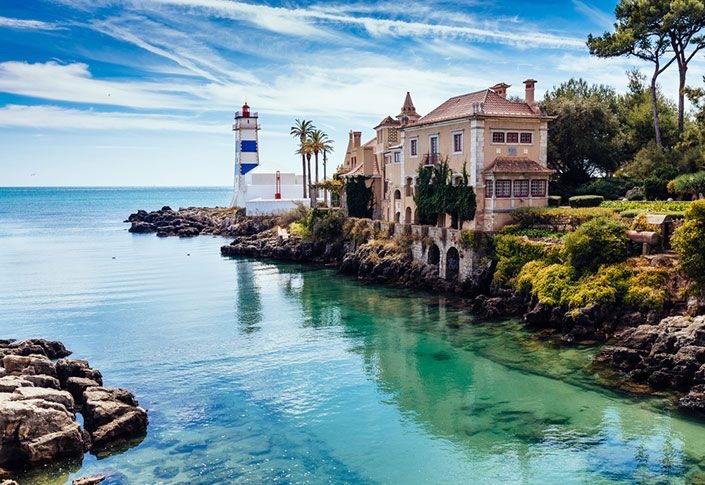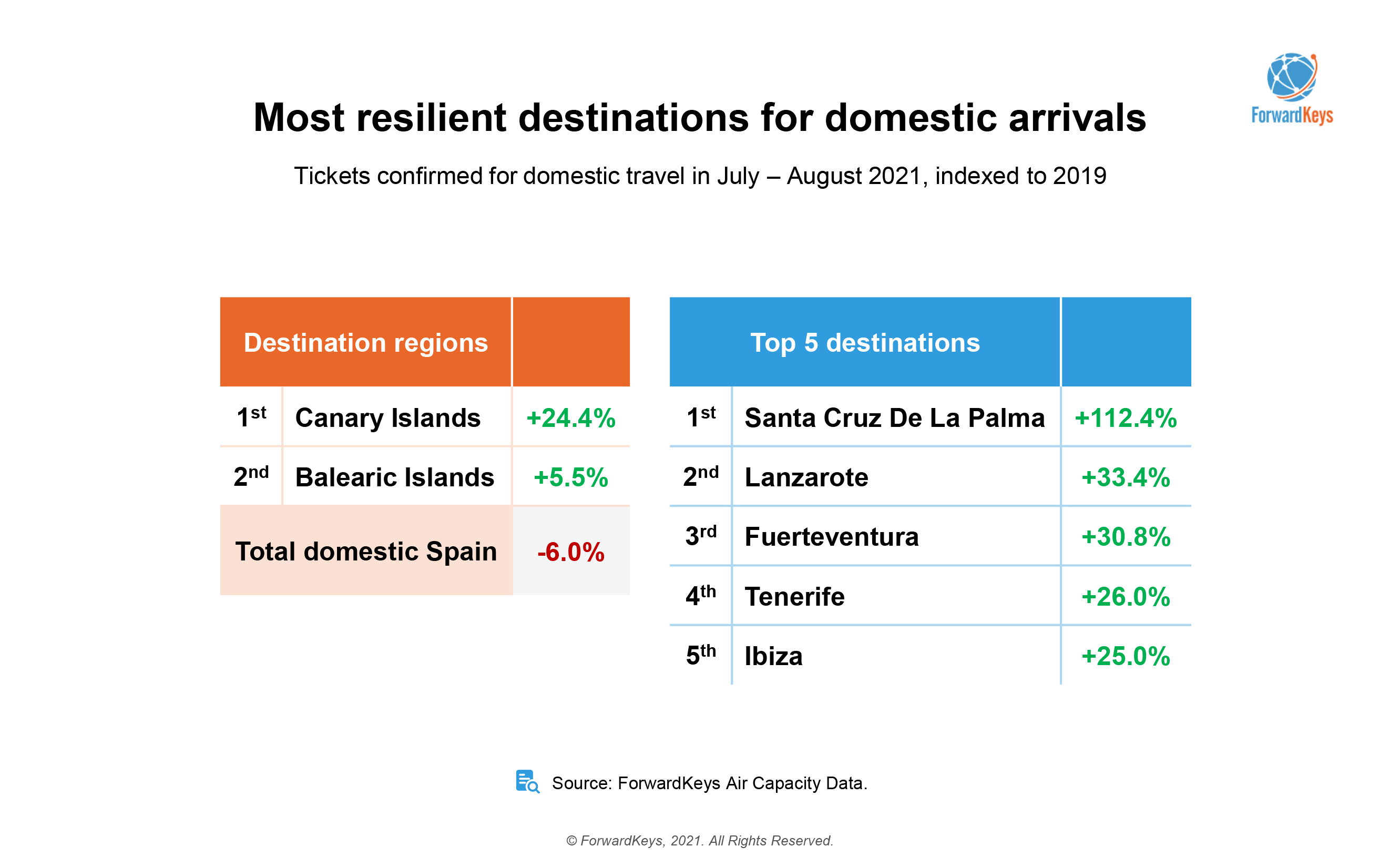Where travel agents earn, learn and save!
News / Destination Spotlight: Spain this Summer
International arrivals into Spain in July-August were half of 2019 levels

ForwardKeys reveals that summer in Spain was exactly how it was predicted to be – international arrivals into Spain in July-August were half of 2019 levels. Spain managed to recover half of the volume of pre-pandemic internationals, down by 49.4% in 2019. On the flip side, domestic tourism was almost at pre-pandemic levels, covering for the loss of international visitors and three Spanish cities made it into the top 10 most resilient European cities list: Ibiza, Palma de Mallorca, and Malaga.

Top Five Performing Source Markets into Spain & the impact of travel restrictions
Travel restrictions and government announcements discouraging their citizens from travelling to Spain this summer dampened the promising start of the summer season which saw passenger volumes higher than 2020 levels, yet still lower than 2019 levels, from June to early August.
Traditional key source markets such as the UK and Germany saw marked declines. “This summer Spain was vastly impacted by the UK travel restrictions, which resulted in a 40.3% drop in arrival numbers compared to 2019, despite the relaxation of these in August. The German inbound market was also down by 34% following the discouraging messages from the German government,” says Juan Gomez, Analyst at ForwardKeys.
However, new top source market superstars appeared in the shape of tourists from Sweden, Denmark, and the Netherlands, posting growth on pre-pandemic figures and therefore presenting a new opportunity for hoteliers and tour operators who quickly adapted their promotions and offers.

The role of seat capacity on arrivals into Spain
Let’s examine not only the role governments had in the shape of the travel restrictions imposed but also, the role airlines had in bringing tourists to Spain.
Dutch holidaymakers played a key role this summer in Spain, and we can see that was further supported by the number of flights available out of the Netherlands. Seat capacity from The Netherlands was at 94% of 2019 seat capacity. France followed suit at 78% of pre-pandemic levels. Whereas the seat capacity from the UK was only at 49% of 2019 levels.

The Summer drawcard to Spain – the Islands
The Balearic Islands proved to be a hot destination this summer, for both international and domestic travellers. Ibiza took the centre position as the most in-demand destination in the Balearic Islands, which coupled with the good performance of the international market made the island one of the most resilient destinations in Spain this summer. Not in vain, Ibiza was the 4th top-performing European city with a share above 1% of all international arrivals to Europe.
For internationals, this year, the most resilient regions in Spain were the Balearic Islands (-22.5% vs 2019) and the Valencian Community (-37.5% vs 2019). Both figures are above the total numbers for Spain, down by 49.3%. In terms of cities, Ibiza was by far the winning destination for internationals this year, down by just 7.6% versus the same moment in 2019.
When we turn the focus on domestic tourism this summer in Spain, we can finally discover some positive growths for some destinations with the Canary Islands making a bold entrance.
The most resilient regions for the local market showed the Canary Islands at +24.4% YoY and the Balearic Islands at +5.5% this summer. Santa Cruz de La Palma in Gran Canaria saw a whopping growth in year-on-year variation, up by 112.4%!
“Spaniards have flocked to the islands this summer in search of a local paradise. Destinations such as Tenerife or Ibiza, greatly dependent on international arrivals, have somewhat managed to brighten up their summer season with the strong influx of local visitors, up by 26% and 25% on 2019 figures respectively”, adds Gomez.

It appears domestic tourism won this summer as many forgoed the frustrations of travel restrictions by staying local and in their own country. What does the future look like for Spain for September and October?
“The remaining part of the year looks promising. Tickets confirmed for travel to Spain from September to December are already at 50% of what was traditionally booked now. Considering how short the lead booking times have become, it wouldn’t be surprising to see many visitors book last-minute escapes to Spain this autumn,” says Gomez.
“For the domestic market, we remain cautious as the market is highly seasonal, however, we expect to see decent upticks in October and early December coinciding with 12 de Octubre and Constitución national holidays.”











